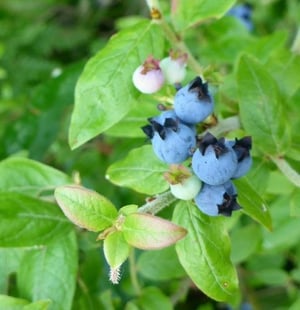Life passes through seasons, and everyone and everything are influenced by them. My upcoming book, Soul of the Seasons, discusses the seasons (Winter, Spring, Summer, Harvest, and Fall), the wisdom that they provide, and how our inner lives reflect them.[1]
As an author, I have found the above to be truest during the writing process. Like all of life on earth, each writing project possesses a birth, a period of new growth, a time of maturation, a time of harvest, and a time for things to fall away.
Winter: Gestation & Germination
Writing begins with an idea, a fertile seed that falls softly, seemingly randomly at times, into our consciousness. We might read a headline or overhear a conversation; or we may observe something unusual, and an idea begins to gestate.
 Sometimes these seeds lay dormant for years until they germinate, and this period of dormancy is the creative cycle’s Winter season. Things are dark here, and it seems like nothing’s happening. But the fertile ground of our imagination provides the perfect environment for our sprouting ideas, and a tiny root is sent deep. Soon, we’ll see if our idea has what it takes to move to the next season of the writing cycle. It’s good to remember that not all seeds sprout or grow into mature plants.
Sometimes these seeds lay dormant for years until they germinate, and this period of dormancy is the creative cycle’s Winter season. Things are dark here, and it seems like nothing’s happening. But the fertile ground of our imagination provides the perfect environment for our sprouting ideas, and a tiny root is sent deep. Soon, we’ll see if our idea has what it takes to move to the next season of the writing cycle. It’s good to remember that not all seeds sprout or grow into mature plants.
Visions of Spring
 JIf our story idea has enough potential, it will poke its head above ground in Spring. We get excited. Ideas spill out everywhere. We might find ourselves scribbling notes at odd moments and daydreaming about characters and storylines. Our vision starts to nag at us at all hours, begging us to write it down! Writing furiously during stolen moments or late into the night, we create our first draft. It’s gangly and wordy and rambling, but it’s finally down in tangible form
JIf our story idea has enough potential, it will poke its head above ground in Spring. We get excited. Ideas spill out everywhere. We might find ourselves scribbling notes at odd moments and daydreaming about characters and storylines. Our vision starts to nag at us at all hours, begging us to write it down! Writing furiously during stolen moments or late into the night, we create our first draft. It’s gangly and wordy and rambling, but it’s finally down in tangible form
Summertime: Maturation
 After a season of explosive new growth, our story needs our help to mature. We now must shape and structure our story idea. If we are not careful to support our seedling story, it may wither and die. Summer is when our visions are brought to fruition. We notice a particular scene that has wandered into a dead-end alley or a character who needs more development. We might realize the plot needs a better foundation so that the story is logical and cohesive. We prune here and feed there. We water, cull the weeds, and pull up withering plants. We might invite others who are wise in the ways of tending stories to help us. We revise and revise. And revise. It becomes shapely, full-bodied. Our piece begins to resemble that glorious vision we first saw in Spring. It’s nearly ready for the picking.
After a season of explosive new growth, our story needs our help to mature. We now must shape and structure our story idea. If we are not careful to support our seedling story, it may wither and die. Summer is when our visions are brought to fruition. We notice a particular scene that has wandered into a dead-end alley or a character who needs more development. We might realize the plot needs a better foundation so that the story is logical and cohesive. We prune here and feed there. We water, cull the weeds, and pull up withering plants. We might invite others who are wise in the ways of tending stories to help us. We revise and revise. And revise. It becomes shapely, full-bodied. Our piece begins to resemble that glorious vision we first saw in Spring. It’s nearly ready for the picking.
An abundant Harvest
Harvest is the time when we find sweet satisfaction in all the hard work it took to bring our project to this place. Though we might still tweak things a bit here and there, it’s time to share with others the product of all our efforts. During this phase, we might send our manuscript to beta readers for their feedback. We hope that others see our work, passion, excitement, and dedication. We dream that, in some way, it will feed their creative seeds too.
Fall: The Great Letting Go
Now, we must let go. We send the fruits of our efforts to editors, agents, or publishers, generously sharing what we have created with the world. Fall is the time to evaluate what needs to be kept and what must come to an end. Many authors speak of a sort of post-partum depression when they release their work into the world. Grief, the natural emotional response of letting go of something you love dearly, occurs in the season of Fall. The longer you have worked on a project, the deeper the grief may be.
 Often during the writing process, we come across seeds for new story ideas, and we carefully tuck them away until they are ready to sprout and take shape. These ideas will give us something to ponder during our next Winter season of the writing process. But, for now, we can respect and honor that we had what it took to create, shape, mature, and produce our work. In Fall, we value all we have received and all we have been given during the arduous creative process. Soon, we will once again begin the mysterious, magical, rewarding cycle of creation.
Often during the writing process, we come across seeds for new story ideas, and we carefully tuck them away until they are ready to sprout and take shape. These ideas will give us something to ponder during our next Winter season of the writing process. But, for now, we can respect and honor that we had what it took to create, shape, mature, and produce our work. In Fall, we value all we have received and all we have been given during the arduous creative process. Soon, we will once again begin the mysterious, magical, rewarding cycle of creation.
[1] I first learned of this concept when I began to study Plant Spirit Medicine, a healing modality that blends Five Element medicine (a traditional Chinese Medicine) with indigenous plant spirit healing. Five Element medicine is a dynamic system of balance and harmony based on the premise that, “Everything has to do with everything.” Like the pieces of a mechanical clock, the dynamic system of life is comprised of seemingly endless parts, all moving and shifting together with precision. And, just as the separate parts all have a purpose and function, they only perform this function as a part of the whole.

Melody A Scout is a plant lover, teacher, spiritual advisor, and a writer of both fiction and non-fiction. During her Plant Spirit Medicine Healer training she began writing her recently released book, Soul of the Seasons: Creating Balance, Resilience, & Connection by Tapping the Wisdom of the Natural World. Melody continues to engage with the healing power of her plant friends through her healing practice, as a teacher, and, as a landscape designer and consultant.
Melody answers email at seasons@sparkolife.com
eBOOK SPECIAL OF THE MONTH: DISCOVER YOUR TRUE SELF IN 23 DAYS FOR ONLY $19.97 (reg. $29.97)



Leave Comment